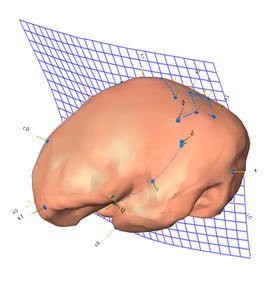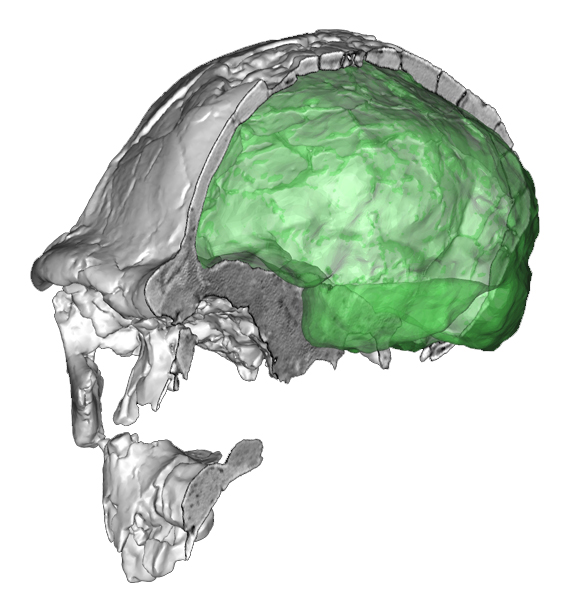 Happy 2019 to everybody! To begin with this new year, here a new review on human paleoneurology, published in Journal of Comparative Neurology. Some conceptual and methodological issues in functional craniology, digital anatomy and computed morphometrics are introduced and discussed. The case-study on parietal evolution is also briefly summarized, with special attention to connectivity. Nonetheless, more specifically, the review points to theoretical and practical limitations of the field. Living species can provide information on the product of evolution, while fossils are necessary to provide information on the process. In the former case (extant species) we can rely on more comprehensive biological analyses, but results concern the final result of the process, not the process itself. In the latter case (extinct species) we can investigate directly the process, but samples are generally not representative neither at biological nor at statistical level. This dual framework is often not properly acknowledged, confounding taxonomy (the product) with phylogeny (the process). When samples and information are analyzed without these cautions in mind, conclusions can generate misleading hybrid perspectives. From the one hand, living species (monkeys and apes in anthropology and evolutionary neuroscience) are still frequenlty misinterpreted as primitive human ancestors. At the same time, scattered and descriptive information on individual and fragmented fossils are generalized to propose broad and inclusive theories. Both aspects are, scientifically speaking, crucial weaknesses, generating instability and unreliability within the field.
Happy 2019 to everybody! To begin with this new year, here a new review on human paleoneurology, published in Journal of Comparative Neurology. Some conceptual and methodological issues in functional craniology, digital anatomy and computed morphometrics are introduced and discussed. The case-study on parietal evolution is also briefly summarized, with special attention to connectivity. Nonetheless, more specifically, the review points to theoretical and practical limitations of the field. Living species can provide information on the product of evolution, while fossils are necessary to provide information on the process. In the former case (extant species) we can rely on more comprehensive biological analyses, but results concern the final result of the process, not the process itself. In the latter case (extinct species) we can investigate directly the process, but samples are generally not representative neither at biological nor at statistical level. This dual framework is often not properly acknowledged, confounding taxonomy (the product) with phylogeny (the process). When samples and information are analyzed without these cautions in mind, conclusions can generate misleading hybrid perspectives. From the one hand, living species (monkeys and apes in anthropology and evolutionary neuroscience) are still frequenlty misinterpreted as primitive human ancestors. At the same time, scattered and descriptive information on individual and fragmented fossils are generalized to propose broad and inclusive theories. Both aspects are, scientifically speaking, crucial weaknesses, generating instability and unreliability within the field.
Another issue concerns the Homo-centric perspective that still contaminates evolutionary neuroanatomy and evolutionary anthropology. Apart from generating a deformed evolutionary scenario, anthropocentric views demote attention towards the other primates. Apes are generally used to “shed light on human evolution”. But living apes are not ancestral to humans. They could be bad models to understand our evolution, as we humans are probably bad models to understand their own one. They have their own specialized traits, which merit attention. In fact, apes are themselves an exceptional zoological case study. Anthropology is interesting, but apeology is interesting too. In cognitive terms, for example, apes could have capacities that we have never evolved. Finally, it can be also worth nothing that, charmed in searching for “what makes us humans”, we are neglecting “what makes us primates”. Because these latter features are associated with instincts, emotions, and cognitive constraints, they seriously deserve attention. Mostly when recognizing that they often deal with our social aspects, and with their consequences.

Great review Emi. Theoretical and methodological limitations must be explicitly emphasized if the literature is not going to be muddied with mischaracterizations.
Thanks, Jim! Any field should investigate and recognize its own boundaries … To deal (and even trespass) boundaries and limitations one must first understand where they are. Ignoring or neglecting their existence does not mean that they do not exist …
Unfortunately, most of all in theoretical disciplines, sometimes personal opinions are presented as scientific hypotheses, and accepted because they are “possible”. But, religion works with possibility … science, instead, relies on probability, which is a very distinct perspective.
Similarly, results (for example, a fossil or a statistical output) are often used to generate hypotheses, instead of being used to evaluate and test hypotheses … Phylogeny is frequently confused with taxonomy, confounding the process with its product.
It may look polemical to deal with all these issues but, after all, language is probably the tool with which we shape our thinking, so we should pay attention to such “details”. The opposite alternative is probably superficial, it should be avoided in a professional context, and it involves consequences.
😉